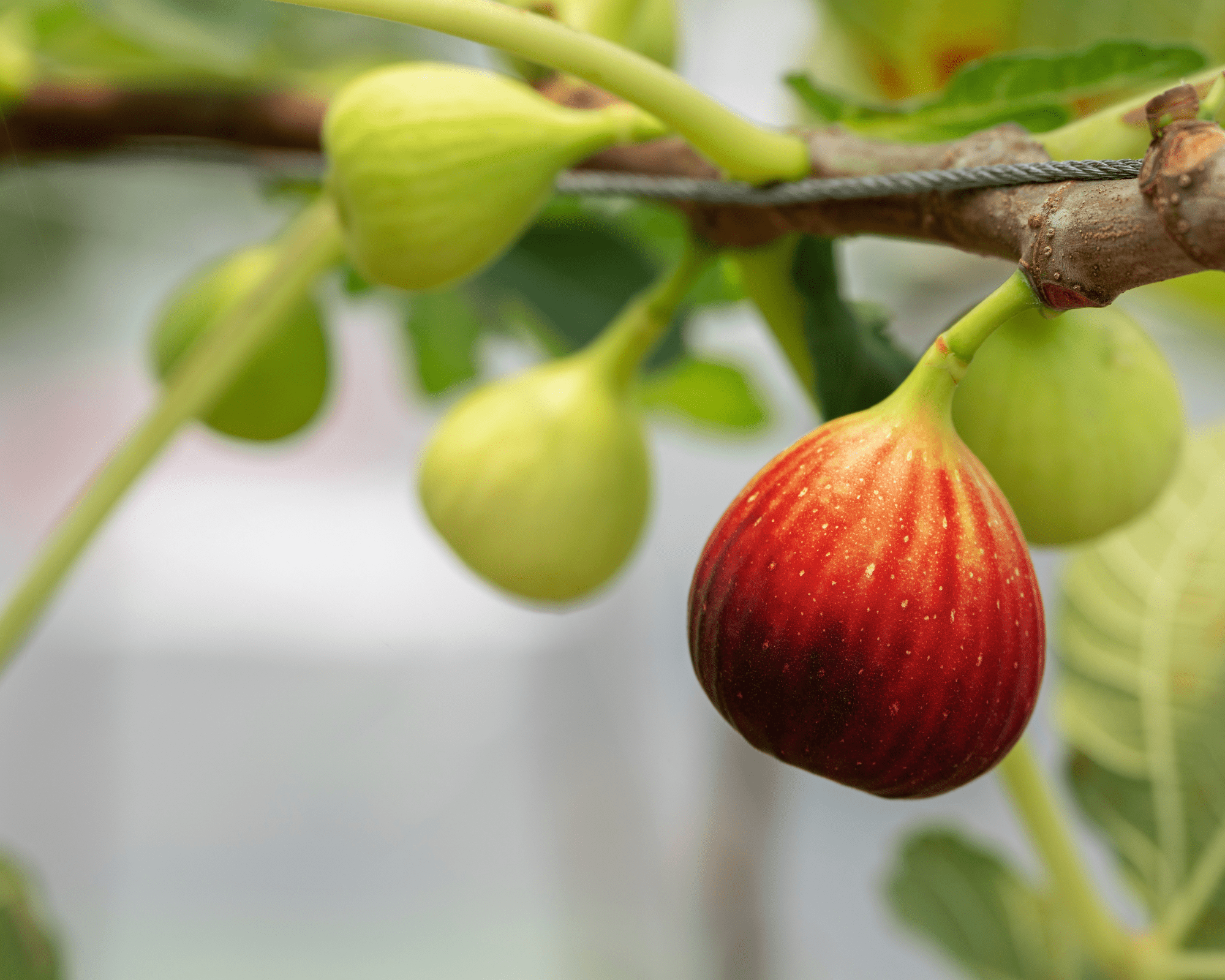Please read the full disclosure for more info. 💚
If you’re dreaming of growing your own sweet, juicy figs right in your backyard, you’re in the right place! Fig trees are surprisingly well-suited to hot climates like the Philippines, making them a fantastic addition to any garden in tropical and subtropical regions.
In this guide, we’ll walk you through everything you need to know to plant, care for, and harvest delicious figs in your Figgylicious Garden—even in the heat of the Philippines.
Why Fig Trees Thrive in Hot Climates
Figs are one of the most adaptable fruit trees, making them perfect for hot, humid climates like the Philippines. Here’s why:
- Heat-Tolerant: Figs love the sun. In fact, they thrive in hot climates with temperatures consistently above 25°C (77°F). The warm weather helps them produce their signature sweet, chewy fruit.
- Low Maintenance: Once established, fig trees are relatively drought-tolerant, making them ideal for areas with hot, dry spells. They don’t require a ton of water, but they do need well-drained soil.
- Fast Growers: Fig trees grow quickly, so you’ll see results in just a couple of years, even if you’re starting from a small sapling.
Growing figs can be a rewarding experience, and with the right care, you’ll enjoy fresh figs right from your own backyard!
Choosing the Right Fig Varieties for the Philippines
Not all fig varieties are suited to tropical climates, so choosing the right one is key to your success. Here are some varieties that thrive in the Philippines:
- Black Mission Fig: Known for its rich, sweet flavor, the Black Mission fig is one of the most popular fig varieties. It can handle the heat and produces dark purple fruit that’s perfect for snacking or making jams.
- Kadota Fig: A more heat-resistant variety, Kadota figs have a light green skin and a sweet, mild flavor. They’re perfect for tropical climates and provide a great yield.
- Adriatic Fig: Adriatic figs are smaller and lighter green in color but still pack a punch when it comes to flavor. This variety does well in the Philippines’ humid conditions.
When choosing your fig tree, be sure to buy from a reputable nursery to ensure healthy saplings. Starting with strong, disease-free plants is essential for a thriving garden.
Ideal Growing Conditions for Fig Trees in Hot Climates
Fig trees are pretty easygoing when it comes to growing conditions, but there are a few things they do prefer:
- Sunlight: Figs need a lot of sunlight to thrive—aim for at least 6 hours of full sun each day. Choose a sunny spot in your garden that’s free from heavy shade.
- Soil: Fig trees prefer well-drained soil with a slightly acidic to neutral pH (around 6.0 to 7.5). If your soil is too heavy or clay-like, you can mix in organic compost to improve drainage.
- Space: Fig trees can grow quite large, up to 10–15 feet tall, with a similar spread. Plant your tree far enough apart from other plants to allow for this growth, and ensure good air circulation to reduce the risk of disease.
- Wind Protection: While figs love the sun, they’re not big fans of strong winds, which can damage their leaves and fruit. Planting near a natural windbreak (like a fence or taller trees) can help keep your fig tree healthy.
Planting and Care Tips for Your Fig Garden
Planting a fig tree is an exciting process, but it’s important to do it right to give your tree the best start possible:
- Prepare the Soil: Before planting, loosen the soil to a depth of at least 6 inches. Add compost or well-rotted manure to enrich the soil and ensure good drainage.
- Planting the Tree: Dig a hole that’s twice as wide and just as deep as the root ball of the sapling. Place the sapling in the hole and fill it with soil, gently patting down to remove air pockets. Make sure the root crown is level with the soil surface.
- Watering: Water your tree deeply after planting, but avoid waterlogging. Fig trees are sensitive to overwatering, so ensure the soil drains well. During the dry season, water every 7–10 days.
- Mulching: Mulch around the base of the tree to help retain moisture and keep the roots cool. Organic mulch like straw or wood chips works best.
Seasonal Maintenance and Fig Tree Care
After planting, your fig tree will need some attention throughout the year to stay healthy and productive. Here’s how to care for it across the seasons:
- Rainy Season: Figs love the wet season, but too much rain can lead to root rot or fungal diseases. Make sure the soil drains well and avoid overwatering. Prune away any dead or diseased branches.
- Dry Season: During dry spells, water your fig tree more frequently but ensure the soil dries out between waterings. If you live in a particularly hot area, consider using shade cloth during the hottest months to protect young trees from sunburn.
- Pruning: Fig trees don’t need heavy pruning, but it helps to remove any dead or damaged branches to keep the tree healthy and encourage air circulation. Prune after the fruiting season to avoid cutting off potential fruit-bearing growth.
Common Challenges in Growing Fig Trees in Tropical Climates
While fig trees are hardy, they can face some challenges in the Philippines’ tropical environment. Here’s what to look out for:
- Pests: Aphids, scale insects, and caterpillars are common pests that may target your fig tree. Regularly inspect the leaves and stems, and use organic pest control like neem oil or insecticidal soap to keep them at bay.
- Fungal Diseases: High humidity can lead to fungal problems like rust or powdery mildew. To prevent these issues, ensure proper airflow around the tree, and treat any signs of disease promptly with fungicides.
- Root Rot: Overwatering or poor drainage can lead to root rot, especially during the rainy season. Always check that your fig tree’s roots are well-drained, and avoid letting the tree sit in soggy soil for extended periods.
Conclusion: Why You Should Plant Figs in Your Garden
Growing fig trees in the Philippines is not only possible—it’s a delightful way to add beauty and delicious fruit to your garden. Figs are low-maintenance, drought-tolerant, and thrive in hot climates with proper care. With the right variety, planting techniques, and seasonal maintenance, you’ll soon be enjoying your very own fresh figs right from your Figgylicious Garden.
So, whether you’re a seasoned gardener or a newbie eager to try something new, planting fig trees in your tropical garden can be a fun and rewarding experience. Start your fig-growing journey today, and don’t forget to share your figgy adventures with us!
Call to Action:
Got any tips or stories about growing figs in hot climates? We’d love to hear about your experiences in the comments below. Or, for more gardening inspiration, join the Figgylicious Garden community for all things figs!


